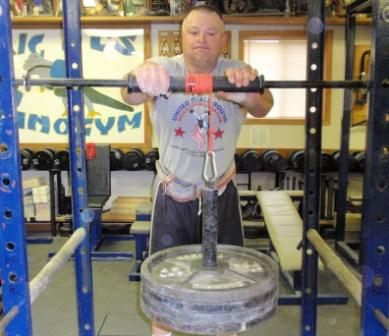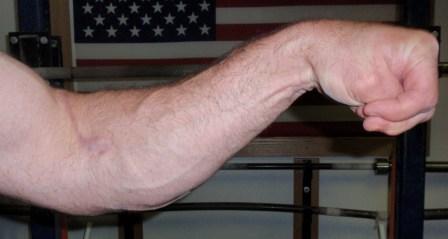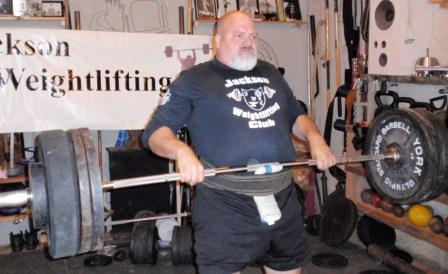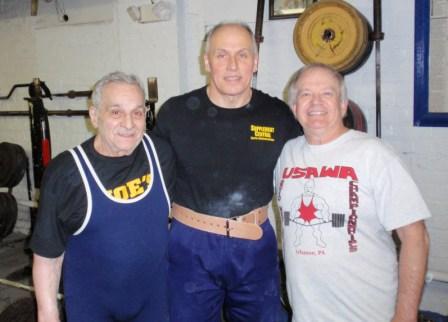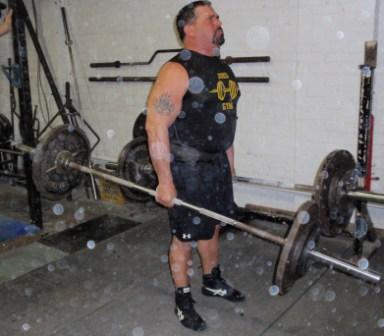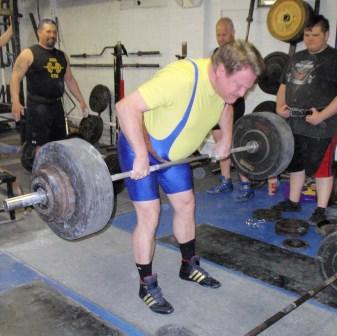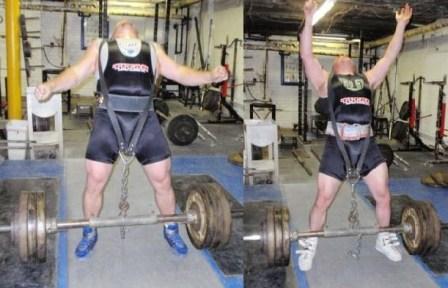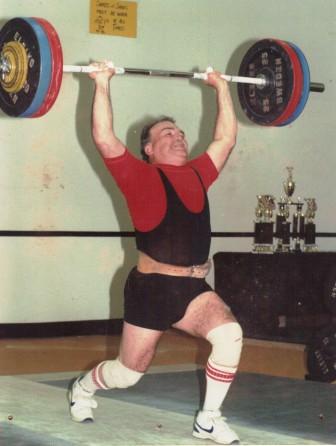My Extreme Wrist Roller
by Al Myers
I am going to start off this week of stories on grip training by describing one of MY favorite grip exercises! Don’t worry – I am NOT one of the winning stories as technically I’m not eligible since I’m the one running the contest! I just want to share an exercise that is the backbone of my grip training.
The Wrist Roller has been around for years. Everyone has one and everyone has done this exercise at some point in their training history. Fifty years ago wrist rollers were practically the only grip exercise trained, and where included as part of “packages” in weightlifting equipment sales. York Barbell would sell equipment packages (back in the 50’s) like this – a 220# set of weights with a bar, a neck harness, a pair of Iron Boots, and a WRIST ROLLER. It was an important training implement back then, and still is – it’s just most lifters have forgot about it. I have used several wrist rollers through the years – from a rope on a dowel rod to now what I call My Extreme Wrist Roller. I am not a grip specialist, but I really enjoy the training exercises for grip. I do a little grip training every week. I don’t specialize on any specific type of grip strength – I try to do a little of everything. Some areas of grip strength I’m stronger at than other areas. I have a good squeeze grip, an average round bar grip, and not the best pinch grip. It is interesting how different lifters will have different areas of grip strengths.
The one thing I really enjoy about the Wrist Roller is that it works not just the grip, but the forearm muscles as well. Too many grip exercises are, what I call, “hand dependent”. This means the “lifting capacity” of these grip exercises are more about the size of the hand or the contact area of the fingers. Bigger hands and longer fingers – more surface adhesion. Growing bigger hands is not exactly something you can do. You are pretty much stuck with what you have. That is why I like forearm training better. You can ALWAYS increase the size of your forearm muscles or strength of your forearm muscles. How many “hand dependent” grip exercises do you train that feel easy up to your max, and then you add 5 pounds, and it becomes impossible? I can think of several – exercises like the Rolling Thunder and any Pinch Grip exercise. These type of exercises go for me like this – easy, easy, easy, impossible. And trying a little harder doesn’t help!! It is still impossible. The Wrist Roller is not like that. You can push yourself as hard as you would like. Sometimes I think I will NEVER get the loaded vertical bar to touch the bottom of the Wrist Roller (which I consider the finish of an attempt), but I keep after it till my forearms are SCREAMING WITH PAIN! You can accomplish any lift with a Wrist Roller if you want to try hard enough! That’s my kind of lift.
I like to do progressive loads with my Extreme Wrist Roller. I will usually start with a couple 45’s and then add weight as I add sets. I try to do 4-5 sets total in about 15 minutes. As I said, I’m not a grip specialist and usually do my grip training at the end of a regular workout. I only “train grip” with the time I have left over. But I’ll tell ya – 15 minutes on my Extreme Wrist Roller and you will know it! Your forearms will be “blood engorged” and cramping from the exertion. At times I can hardly close my hands when I’m done. I made this Extreme Wrist Roller several years ago. I was getting tired of those silly “rope on a stick” wrist rollers because I felt my shoulders were limiting me in how much I could wrist roll, because of the way you had to hold your arms out in front of you during the exercise. With my Extreme Wrist Roller, the wrist roller is supported by the cage and it takes all of the shoulders out of it, and places all of the stress of the exercise where you want it – on your forearms. The roller has a two inch knurled handle. Your grip will not fail before your forearm muscles give out. A side benefit is that the knurled handle will shave off all of your hand calluses by the time you are finished. After you get the VB to the top – the exercise is not over. You then need to lower it under control. Sometimes this seems like the hardest part.
Now I hope you won’t forget about wrist roller training.
